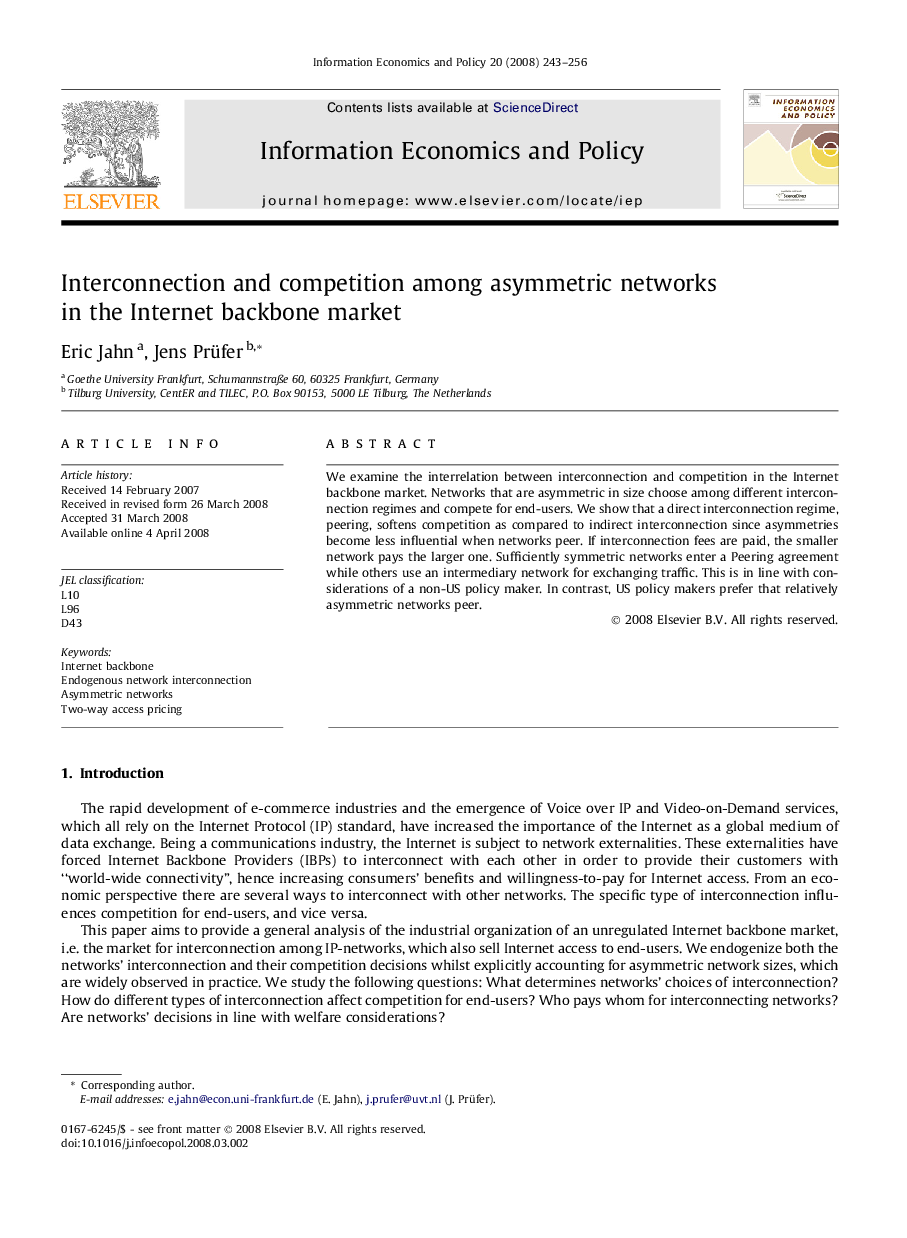| Article ID | Journal | Published Year | Pages | File Type |
|---|---|---|---|---|
| 5076021 | Information Economics and Policy | 2008 | 14 Pages |
Abstract
We examine the interrelation between interconnection and competition in the Internet backbone market. Networks that are asymmetric in size choose among different interconnection regimes and compete for end-users. We show that a direct interconnection regime, peering, softens competition as compared to indirect interconnection since asymmetries become less influential when networks peer. If interconnection fees are paid, the smaller network pays the larger one. Sufficiently symmetric networks enter a Peering agreement while others use an intermediary network for exchanging traffic. This is in line with considerations of a non-US policy maker. In contrast, US policy makers prefer that relatively asymmetric networks peer.
Keywords
Related Topics
Social Sciences and Humanities
Business, Management and Accounting
Management of Technology and Innovation
Authors
Eric Jahn, Jens Prüfer,
